Best Hypoallergenic Baby Formulas (2025 Guide)
This post may contain affiliate links. As an Amazon Associate, I earn from qualifying purchases. Please read my disclosure.If your baby is experiencing digestive issues or discomfort while breastfeeding or drinking formula, you might be considering a hypoallergenic formula. As a parent, I understand how overwhelming it can be to navigate the many options available. That’s why I’ve created this comprehensive, parent-friendly guide to help you confidently find and choose the best hypoallergenic formula for your baby’s needs.
In this guide, you’ll learn the different types of hypoallergenic formulas, key ingredients to look for (and avoid), and trusted sources where you can purchase the best options for your baby. I update this post regularly to provide you with the most accurate and up-to-date information!
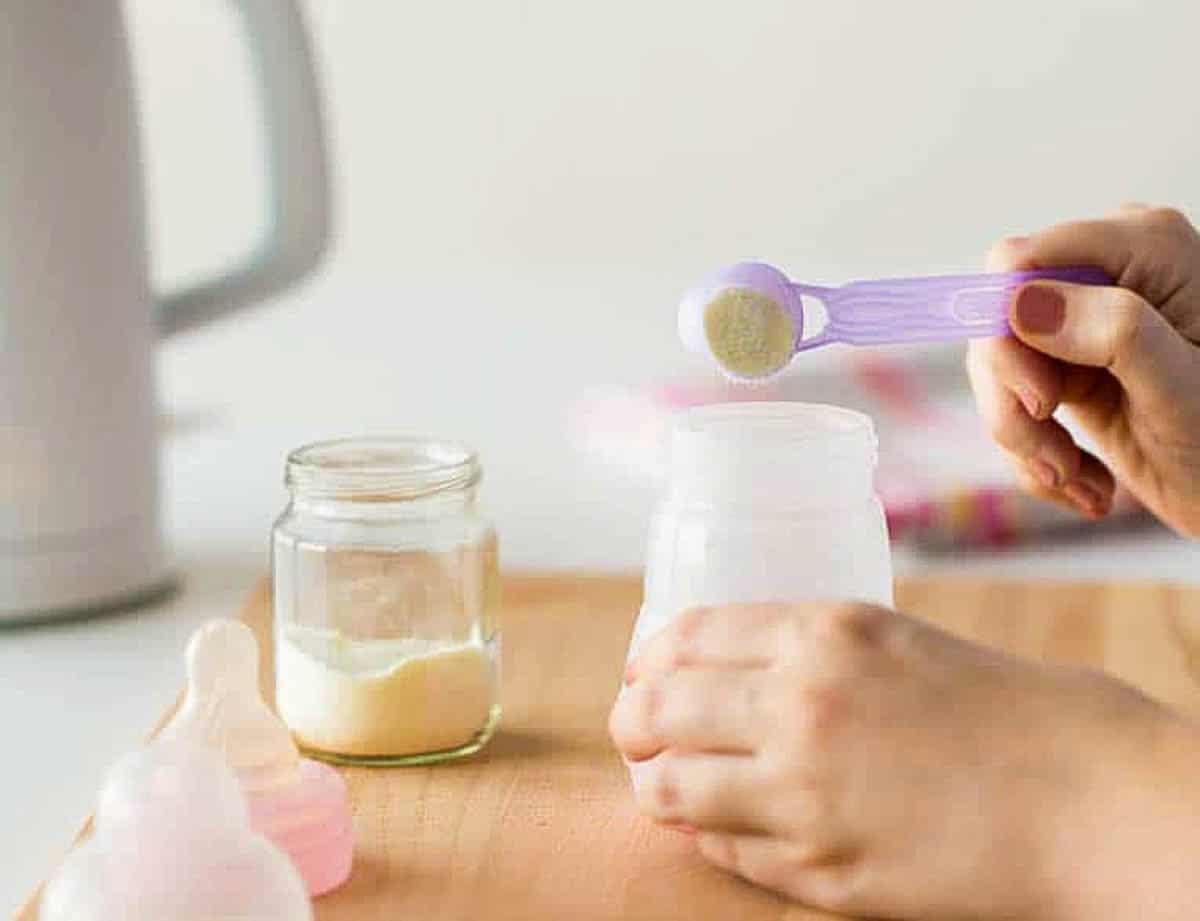
Finding the safest and healthiest formula for your baby can be a stressful process! I’ve heard from many of you that my guide to the best organic baby formula has been helpful in making that process a bit easier.
But navigating the world of hypoallergenic formulas can be even more stressful – because on top of trying to find a healthy solution, you know that your baby is getting sick from the milk protein in regular formula!
I was lucky enough to have two kids who didn’t have any allergies, but I have talked to so many moms who are frustrated with the lack of options for healthy, safe, organic, hypoallergenic baby formulas.
Based on my extensive knowledge as a parent, certified health coach and nutritionist, hundreds of hours working with families and researching over 30 different hypoallergenic infant formula options, I’ve carefully selected the 19 best formula to highlight in this article.
Disclaimer & Methodology
As a board certified health coach and certified nutritionist, I support products and ingredients that are rooted in science and are evidence-based. Using my background in nutrition, along with extensive research (see below for details), consultations with experts, and my own personal experience giving my two kids formula, I was able to arrive at this list of the best hypoallergenic formulas in this guide. This post has also been medically reviewed and fact checked by Linzy Ziegelbaum, MS, RD, CDN (see my about page for more info about Linzy).
My hypoallergenic formula recommendations are based on:
- Over 200 hours of extensive research
- Speaking with thousands of parents on what has worked for their children
- Reviewing the manufacturer’s claims and ingredients list, stages, and varieties of over 65 different formula brands
- Speaking with doctors and pediatricians
- Reviewing countless articles and peer-reviewed studies.
Other Information About This Guide
- Though I may receive a commission (at no extra expense to you) if you purchase through some of the affiliate links provided, I only recommend products I’ve researched, evaluated, consulted experts on, and would feel comfortable giving to my own two children.
- As always, I only share products that are the highest quality and that can help you and your family the most. By purchasing any of these products from the links below, you help keep this blog running, so thanks for your support!
- Hypoallergenic formulas are typically more expensive than regular infant formulas, and they should only be used under the guidance of a healthcare professional. If you suspect your baby has allergies or digestive issues, consult with your pediatrician or a pediatric allergist first to determine the most appropriate formula for your baby’s specific needs, and before starting or switching to a new formula. My recommendations are not a substitute for professional medical advice, diagnosis, or treatment.
Hypoallergenic Formulas: My Top Picks
Before I dive into my detailed list of the best HA formulas, here are my quick picks! (See the FAQs below for definitions for each of these types of formulas).
- Best Organic (Partially Hydrolyzed): Bobbie Organic Gentle
- Best European (Partially Hydrolyzed): HiPP HA Stage 1
- Best With Reduced Lactose (Partially Hydrolyzed): HiPP Comfort
- Best Extensively Hydrolyzed: Gerber Extensive HA
- Best Amino Acid Based: Neocate
- Best Vegan: Bebe M
- Best Goat Milk: Jovie
What is a Hypoallergenic Formula?
A hypoallergenic formula is one that’s specifically designed for babies who have a cow’s milk protein allergy, who have trouble digesting cow’s milk, or have other milk or lactose sensitivities.
The reason they’re called “hypoallergenic” is because they’re made with hydrolyzed milk proteins, which are designed to minimize the risk of allergic reactions in infants. “Hydrolyzed” means that the milk proteins are broken down into smaller pieces (essentially, partially digested), which is what makes them easier for babies to digest and less likely to trigger a reaction.
The extensiveness of hydrolyzed proteins needed (how broken down the proteins are) depends on how severe your baby’s allergy or intolerance is.
This is why they’re often recommended by pediatricians or healthcare professionals (and I will often recommend them to parents who consult me), when there are concerns about a baby’s ability to tolerate standard infant formula.
The American Academy of Pediatrics has strict guidelines for what constitutes a hypoallergenic formula including:
- The formula must be studied in a clinical trial.
- The formula must be studied with infants who have a cow’s milk allergy.
In this article, I’ve also included a few other options that are not technically HA formulas but act in similar ways for babies who have less severe allergies or intolerances like rice-based or goat-milk formulas.
The Best Hypoallergenic Baby Formulas
While no hypoallergenic formula is perfect, the hypoallergenic baby formulas below are considerably better than the rest. You can click on the formula name in the table below to find the best online retailer of the formula. I have organized the formula by type, from partially hydrolyzed to extensively hydrolyzed, and below I have included more alternative formula options (vegan, goat milk, etc) as well!
Partially Hydrolyzed Formulas
These formulas are all partially hydrolyzed, which means their milk proteins are broken down but are still detectable for babies with severe allergies. I have listed these formulas in order of preference, based on their ingredients, since all of them are about the same in terms of hydrolyzation.
HiPP HA PRE
HiPP HA formula comes in 3 stages: Stage PRE, Stage 1, and Stage 2. Besides the age ranges these stages are designed for, there are slight differences in ingredients as well, so I have listed them separately here.
HiPP German Stage PRE formula is a complete nutrition suitable for infants from birth up to three months of age and specifically designed hypoallergenic with extensively hydrolyzed whey protein (86-87% broken down). It doesn’t contain casein (100:0 whey:casein ratio), but it does not have a reduced lactose content. The main difference between HA PRE and HA Stage 1/2 is a slight variation in number of calories, carbohydrates and slight variations in the amount of vitamins/minerals since they are designed for different aged babies. But since PRE is only suitable until 3 months of age, if you’re looking for an HA formula you can use for the entirety of your child’s first year – you’ll want to move from PRE to Stage 1 to Stage 2 as your child gets older.
Try This Formula If: I would recommend trying this if your baby has a cow’s milk allergy or sensitivity and you haven’t tried another hypoallergenic option (or you’re trying to move away from the US hypoallergenic options because of concerns over ingredients). It has extensively hydrolyzed protein, (86-87% broken down), 100% whey (no casein), no starch, but with the same lactose content as a non-hypoallergenic baby formula.
Cost: $42.99 for a 600 gram box.
Note: For any of the Dutch or German formulas, their labels may not always come with an English translation, so I have partnered with Bottles & Burps to provide you with detailed guides for all of the non-UK based hypoallergenic baby formulas! Here is the guide for HiPP HA PRE – for translated nutritional labels, ingredients and preparation instructions so it’s easy to compare to any US based formulas.
You can also get 20% off any single pack at Bottles & Burps using the code PICKYEATER20 (just enter it manually in the checkout process!)
Pros
Cons
HiPP HA Stage 1
HiPP hypoallergenic formula (Stage 1) is meant for babies aged 0-6 months, and is nutritionally similar to HiPP PRE. Note that European hypoallergenic formulas that contain hydrolyzed milk proteins cannot be certified as organic due to strict EU regulations. However, all the other ingredients in HiPP HA (for all stages) are organic. Just like HiPP PRE, this Stage 1 HA formula has extensively hydrolyzed whey protein (86-87% broken down), no casein, and a regular lactose content.
Try This Formula If: Your baby has a cow’s milk allergy or sensitivity, you want a formula that you can use up to 6 months of age, and you haven’t tried another hypoallergenic option (or you’re trying to move away from the US hypoallergenic options because of concerns over ingredients).
Cost: $39.99 for a 600 gram box.
Translated Nutritional Information: HiPP HA Stage 1
Pros
Cons
HiPP HA Stage 2
HiPP HA Stage 2 is designed for babies aged 6 months and older, and can be used on its own as a breast milk substitute or a supplement for breastfeeding. Like HiPP HA Stage PRE and Stage 1, Stage 2 also uses lactose as the primary carbohydrate and has the same amount of lactose as regular formulas. It is also 86-87% hydrolyzed, with no casein. If your baby has been doing well on HiPP HA Stage 1, I would recommend transitioning to Stage 2 once your baby turns 6 months old.
Try This Formula If: Your baby is over 6 months of age, has a cow’s milk allergy or sensitivity and you haven’t tried another hypoallergenic option or are moving up from HA Stage 1 (or you’re trying to move away from the US hypoallergenic options because of concerns over ingredients).
Cost: $40.99 for a 600 gram box.
Translated Nutritional Information: HiPP HA Stage 2
Pros
Cons
HiPP HA Dutch (Stage 1 & 2)
HiPP HA now comes in its Dutch formulation! Ingredients wise, it’s basically identical to the HiPP German HA formula, now that the German HA formula doesn’t include starch. The main difference is that the Dutch formulation comes in a larger, stackable container (vs. the smaller cardboard box for the German version). Stage 1 is suitable for babies aged 0-6 months, Stage 2 is for babies 6-12 months. I’ve listed it lower on this list only because it’s more expensive than the German version, but it’s a good option if the German version is out of stock or if you just want an easier-to-manage container for your baby’s formula.
Try This Formula If: Your baby has a cow’s milk allergy or sensitivity and you haven’t tried another hypoallergenic option and you want a starch-free higher protein HA formula. Has extensively hydrolyzed protein, (86-87% broken down), 100% whey (no casein), and the same lactose content as a non-hypoallergenic baby formula.
Cost: $62.99 for an 800 gram can.
Translated Nutritional Information: HiPP Dutch HA Stage 1, HiPP Dutch HA Stage 2
Pros
Cons
Bobbie Organic Gentle Infant Formula
Bobbie Organic Gentle Formula is the first USDA and EU Organic sensitive formula made with 100% lactose carbohydrates. It contains partially hydrolyzed milk proteins, no synthetic ingredients, and is the most affordable gentle formula I’ve found on the market today!
Try This Formula If: You need a gentle cow’s milk formula for your baby, and your baby doesn’t have a diagnosed cow’s milk protein sensitivity or allergy. Bobbie Organic Gentle Formula is the only US-manufactured tolerance infant formula designed for infants with fussiness, gas and crying that is formulated to support easy digestion, with 100% partially hydrolyzed whey as the protein source and 100% lactose as the carbohydrate source, like that found in breast milk. Bobbie Gentle Formula is not hypoallergenic, according to US requirements, but is similar to EU hydrolyzed formulas which are considered hypoallergenic by EU standards. It is also palm oil free and does not have any soy allergens.
Cost: $28 for a 400 gram can. Subscribe and save to get 10% off your first two orders!
Pros
Cons
Extensively Hydrolyzed Formulas
I have listed these formulas in order of least hydrolyzed (86% with HiPP Comfort) to most hydrolyzed (100% with Gerber HA). Each of these formulas have different pros and cons, which is why I haven’t listed them in order of recommendation – since each one could be the best fit for your baby depending on their needs.
HiPP Comfort
HiPP Comfort is most similar to a US extensively hydrolyzed hypoallergenic formula. While it’s similar to HiPP HA in that it contains 86-87% hydrolyzed milk proteins and no casein, it’s even more allergen friendly because it has a reduced lactose content and modified fats for even easier digestion. (Learn More: Lactose Free Baby Formula).
HiPP Comfort just has “one stage” in that it’s suitable for babies aged 0-12 months! While HiPP Comfort formula cannot be certified as organic because the hydrolyzed milk protein is not available in organic form, the majority of the other ingredients in this formula are organic, and all ingredients are non GMO.
What’s interesting about HiPP Comfort is that while, in formulation, it is the closest to a US hypoallergenic formula and is more broken down than HiPP HA, it’s technically not labeled as a hypoallergenic formula in the EU for regulatory reasons. Comfort is typically indicated for gassiness, colic and constipation. (Learn More: Best Formula For Gassy Babies). I do, in practice, find that parents seeking a “hypoallergenic” formula have been successful with Comfort. So for those who have babies with sensitive tummies, or who react to both whey and casein, this may be the baby formula for you!
Try This Formula If: Your baby has a cow’s milk allergy or sensitivity and HiPP HA hasn’t worked. You can also go straight to this formula if your baby’s symptoms seem more severe, since this formula is going to be more gentle than the HA formulas listed above.
Cost: $39.99 for a 600 gram box.
Translated Nutritional Information: HiPP Comfort
Pros
Cons
Alimentum® Ready to Feed
All of the US hypoallergenic formulas are more extensively hydrolyzed than the European options listed above (HiPP HA and HiPP Comfort). Common extensively hydrolyzed formulas in the US include Alimentum® or Nutramigen®, which are about 93% hydrolyzed.
The ready to feed versions have slightly different ingredients than the powdered versions so we have listed them separately here. But if your baby tolerates HA or Comfort, I would choose those over Alimentum/Nutramigen given that the ingredients list is cleaner. However, if HA or Comfort don’t work, then you have to move to a more hydrolyzed formula like the US options listed here.
I have broken down the % of each ingredient used in the RTF formula to help you get a sense of what the proportions are:
- Water (87%)
- Sugar (4%)
- Casein Hydrolysate [Derived from Milk] (2%)
- Modified Tapioca Starch (2%)
- Safflower Oil (1%)
- Medium Chain Triglycerides (1%)
- Soy Oil (1%)
- Less than 0.5% of the rest of the ingredients including carrageenan
Try This Formula If: Your baby has a cow’s milk protein allergy, HiPP HA and Comfort have not worked, and you are looking for an option with less sugar (and you’re not as concerned about carrageenan). RTF Alimentum includes carrageenan, powdered Alimentum does not. Carrageenan is a food stabilizer and thickener which can cause inflammation in the body. Between the two versions of Alimentum it’s a tradeoff with more sugar and no carrageenan vs. less sugar and added carrageenan that’s less than 0.5% of the total formula. I honestly don’t know which one I would pick over the other so it’s really just a personal choice!
Cost: $66.86 for a pack of (6) 32 fluid oz bottles.
Pros
Cons
Similac Alimentum® (Powdered)
Similac Alimentum® powdered formula is very similar to the ready to feed formula with just a slight difference in certain stabilizing ingredients and the amount of sugar included. This version is also extensively hydrolyzed (93%) making it suitable for babies with cow’s milk protein allergies or lactose sensitivities.
I have broken down the % of each ingredient used in the powdered formula to help you get a sense of what the proportions are:
- Corn maltodextrin (39%)
- Casein hydrolysate (derived from milk) (17%)
- High oleic safflower oil (9%)
- Medium chain triglycerides (9%)
- Sugar (9%)
- Soy oil (8%)
- Less than 2% of the remaining ingredients on the list
Try This Formula If: Your baby has a cow’s milk protein allergy and/or HiPP HA and Comfort have not worked, and you prefer a powdered formula vs. ready to feed. Keep in mind the powdered version has much higher sugar, but no carrageenan compared to the RTF version.
Cost: $36.49 for a 12.1oz can
Pros
Cons
Nutramigen® Ready to Feed
Enfamil Nutramigen is very similar to the RTF version of Alimentum with the exception of prebiotics (Alimentum has it, but the RTF version of Nutramigen does not). However, the ready to feed version of Nutramigen does contain way less sugar than the powdered version, and is extensively hydrolyzed so it’s suitable for babies with cow’s milk protein allergies or lactose intolerances. I have listed Nutramigen under Alimentum because of the lack of added probiotics.
I have broken down the % of each ingredient used in this formula to help you get a sense of what the proportions are:
- Water (87%)
- Corn syrup solids (5%)
- Vegetable oil (palm olein, soy, coconut, and high oleic sunflower oils) (4%)
- Casein hydrolysate (milk) (2%)
- Modified corn starch (2%)
- Less than 1% of the rest of the ingredients on the list, including carrageenan
Try This Formula If: Your baby has a cow’s milk protein allergy, HiPP HA and Comfort have not worked, you are looking for an option with less sugar, you’re not as concerned about carrageenan, and you can’t find the RTF version of Alimentum.
Cost: $102 for a (6) pack of 32oz bottles.
Pros
Cons
Enfamil Nutramigen® (Powdered)
The powdered version of Nutramigen is almost identical to the powdered version of Alimentum. They are pretty interchangeable and have similar pros & cons. It’s 93% hydrolyzed, works for CMPA or lactose intolerance. In clinical studies, infants showed improvement after just 48 hours of being on this formula. (Learn More: HiPP HA vs. Nutramigen).
I have broken down the % of each ingredient used in this formula to help you get a sense of what the proportions are:
- Corn syrup solids (47%)
- Vegetable oil (palm olein, coconut, soy, and high oleic sunflower oils) (26%)
- Casein hydrolysate (milk) (17%)
- Modified corn starch (4%)
- Less than 2% each of the rest of the ingredients on the list
Try This Formula If: You have tried HiPP HA and HiPP Comfort and neither have worked, and/or your baby has a cow’s milk protein allergy. Also worth trying if you can’t find the powdered version of Alimentum, as this is a very similar formula.
Cost: $37.80 for a 12.6oz can
Pros
Cons
Gerber Extensive HA
This formula is 100% hydrolyzed, so it’s even more broken down than Alimentum / Nutramigen, and is the most extensively hydrolyzed formula I’ve found on the market today. It contains 100% whey protein broken down into tiny pieces designed to be well-tolerated by most babies with CMPA and ultra-filtered for low residual allergenicity. It’s also a lactose-free formula, so it covers most milk related allergies out there! It also happens to be Non-GMO – which is a huge plus since most US hypoallergenic formulas are not.
Try This Formula If: You need a 100% extensively hydrolyzed formula. You have tried HiPP HA and HiPP Comfort and neither have worked, and your baby has a cow’s milk protein allergy.
Cost: $32.29 for a 14.1 oz can.
Pros
Cons
Amino Acid Based Formulas
There are really only two amino acid based formulas in the US, and they’re pretty equivalent in terms of ingredients. The main issue with both has been availability and price, so if your pediatrician has recommended an amino acid based formula, your best bet is to just choose the one that’s most budget friendly and easy to find! Additional things I would consider are – picking the one your baby tolerates the most and the one that tastes the best.
Neocate®
Neocate® is 100% hypoallergenic and is made up of amino acids exclusively. It is considered a medical food, and should only be used under the supervision / recommendation of your child’s pediatrician. In clinical studies, Neocate® has been shown to reduce allergic reactions and CMPA symptoms within 3-14 days. I find that Neocate® and Elecare® are almost exactly the same, so when choosing between them I’d just pick whichever one is more affordable or available depending on where you’re located!
Try This Formula If: Your pediatrician has specifically suggested that you use an amino acid based formula and/or you have tried the other formulas on this list and your baby is still having digestive issues (indicative of a more severe cow’s milk allergy).
Cost: $44.5 for a 14.1 oz can
Pros
Cons
EleCare®
EleCare® is a hypoallergenic, amino acid based formula, similar to Neocate®. It is made with 100% free amino acids as the protein source for infants who cannot tolerate intact or hydrolyzed protein.
Try This Formula If: Your pediatrician has specifically suggested that you use an amino acid based formula and/or you have tried the other formulas on this list and your baby is still having digestive issues (indicative of a more severe cow’s milk allergy).
Cost: $43.69 for a 14.1 oz can.
Pros
Cons
Vegan Baby Formulas
There are only a couple of high quality, organic, vegan formulas that are suitable for infants on the market today. These are my top 2 picks for dairy free baby formulas that may work for an infant with a milk protein allergy. You can see all of the options for vegan baby formulas in my linked guide!
Bebe M Stages 1-3
Bebe M (Bebe Mandorle) Organic Rice-Based Infant Formula is 100% organic, and suitable from birth until 12 months of age (Stage 1 is from 0-6 months, Stage 2 from 6-9 months, Stage 3 from 10 months – 3 years of age!).
It uses 100% plant-based ingredients that are tightly regulated by the EU, designed to meet the nutritional requirements for babies. It is made from an organic rice protein hydrolysate, which makes it a dairy-free formula that’s vegan friendly, but is also suitable for babies with dairy allergies or lactose intolerance. It also contains no palm oil and has a super clean ingredients list! (Learn more: Palm Oil In Baby Formula).
Try This Formula If: Your baby seems to have a cow’s milk allergy, and you want to try an organic formula to meet your baby’s nutritional requirements, and your baby doesn’t have an allergy to brown rice proteins.
Note: This product is labeled as “Foods for special medical purposes (FSMPs)” and should be only given under medical supervision. Please consult your pediatrician before introducing this formula to your baby.
Cost: $64.99 for a 600 gram can.
Pros
Cons
Premibio® Organic Vegan Stages 1-3
Premibio® Organic Rice-Based Infant Formula is 100% organic, and suitable from birth until 12 months of age (comes in 3 stages, just like Bebe M above).
This is a lactose-free and vegan formula based on hydrolyzed rice protein, and is also gluten-free and palm oil free. It uses 100% plant-based ingredients, and meets the nutritional requirements for babies for growth and development. Because it is dairy free, it can be suitable for babies with a lactose or cow’s milk allergy.
Try This Formula If: Your baby seems to have a cow’s milk allergy, and you want to try an organic formula to meet your baby’s nutritional requirements, you want a cheaper alternative to Bebe M, and your baby doesn’t have an allergy to brown rice proteins. Please consult your pediatrician before introducing this formula to your baby.
Cost: $49.99 for a 600 gram can.
Pros
Cons
Goat Milk And A2 Protein Formulas
Goat milk or A2 protein formulas are not technically hypoallergenic. However, I’ve found that babies with a mild milk protein sensitivity can do better on these two formulas, since they both have the A2 vs. A1 milk protein (and the A2 protein is easier to digest).
There are quite a few different goat milk and A2 milk protein formulas on the market today. I have just short listed the top 5 here, but you can learn more about goat milk formulas and A2 baby formulas in my linked guides. These can be good options for babies with a mild cow’s milk sensitivity, but not a diagnosed cow’s milk protein allergy (as babies with a severe allergy may still react to goat milk proteins).
Jovie Goat Milk Formula
I love Jovie – it’s a great option for a goat milk formula. Jovie is made in the Netherlands, and is committed to producing high quality, 100% organic whole goat milk formulas that meets babies and toddlers nutritional needs.
Since it’s made with whole goat milk, it contains only A2 casein milk protein, which is easier to digest for babies and may be less reactive for infants with sensitive digestive systems. Comes in 3 stages – Stage 1 is from birth to 6 months, Stage 2 from 6-12 months of age, and Stage 3 for age 1+.
Try This Formula If: Your baby has a cow’s milk sensitivity, but not a diagnosed cow’s milk allergy. Goat milk formula is easier to digest because goat milk has A2 milk protein (vs A1 which is in cow’s milk and is harder to digest).
Cost: $63.99 for an 800 gram can.
Pros
Cons
Kendamil Goat
Kendamil uses whole goat milk instead of skimmed milk. It also has no palm oil, no soy, no added sugars, and is 100% vegetarian – uses plant based DHA/ARA with NO hexane extraction. It contains prebiotics and has a whey:casein ratio that mimics breastmilk for easy digestion.
It is technically not organic, but it is non-GMO and has Red tractor certified ingredients. This means Kendamil follows rigorous production standards and the farms they obtain their goat milk from do not use growth hormones or antibiotics. Formulated especially for infants, with 3 different stages to accompany your baby from infancy to their toddler years. I also appreciate that it’s available in the US for purchase at Target!
Try This Formula If: Your baby has a cow’s milk sensitivity, but not a cow’s milk allergy, and you want to try a formula that has A2 milk proteins for easier digestion.
Cost: $65.99 for an 800 gram can.
Pros
Cons
Kabrita USA
Kabrita USA is technically a toddler formula, but it does meet the nutritional requirements of infant formula (so if you want to try it, I recommend making sure your pediatrician is comfortable with you using it).
Kabrita USA also has a super clean ingredients list, it contains no added sugars, no maltodextrin, no syrup solids and has the right composition of essential fatty acids to be gentle for babies’ tummies to digest. It’s also one of the more affordable options for goat milk formula. Lastly, Kabrita is offering 10% off all orders with the coupon code GENTLEKABRITA! (Note: Kabrita does have an infant formula as well that also has a clean ingredients list. Their infant formula has to be shipped from Europe while their toddler formula is available for sale in the US).
Try This Formula If: Your baby has a cow’s milk sensitivity, but not a cow’s milk allergy. Goat milk formula has been a good option for babies with a cow’s milk sensitivity. But if your baby has a diagnosed cow’s milk protein allergy, they may have an issue with goat milk protein as well. You should also make sure your pediatrician is ok with you using Kabrita for your baby before you start this (or any other) formula, especially since Kabrita is technically a toddler formula.
Cost: $19.99 for a 14oz (400 gram) can.
Pros
Cons
Holle A2
Holle organic A2 formula comes in multiple stages to grow with your baby. It’s certified organic by the EU, non-GMO, uses A2 skimmed milk from cows (organic nonfat milk) which may be easier for babies to digest.
Holle A2 cow milk formula is created from 99% organic ingredients and has no added sugars. Babies who have trouble digesting regular formula (made with A1 cow’s milk) may do better on A2 cow’s milk. The A2 beta-casein protein type is typically easier to digest than A1 milk proteins (which is the more common protein found in cow’s milk) This formula allows babies to continue drinking cow’s milk but without the protein that causes the discomfort. Contains DHA, but does not contain prebiotics or probiotics.
Try This Formula If: Your baby has an A1 casein allergy, but not a cow’s milk protein allergy, and you don’t want to try a goat’s milk formula.
Cost: $32.99 for a 400 gram box.
Pros
Cons
Features and Ingredients to Look For When Choosing a HA Formula
When choosing a hypoallergenic formula for your baby, I recommend looking for formulas that are specifically designed to be hypoallergenic and have the cleanest ingredients list possible.
Keep in mind that since HA formulas have broken down milk proteins and also tend to have reduced lactose, they often have to add in another carbohydrates to meet the nutritional requirements for infants.
Because of that, it’s nearly impossible to find an HA formula that is “perfect” – e.g. that has zero additives and zero added sugars or starches, but I have found that the key is to look for the formulas that minimize the use of fillers and really tend towards all-natural ingredients as much as possible. Here are some key ingredients and features to consider when selecting a hypoallergenic formula:
✅ Certified Organic (either USDA or EU Certified) or at least Non-GMO.
✅ Meets nutritional standards for babies (in the US or the EU) and includes key vitamins and minerals for development (Note: requirements are different in the US and EU for both iron and DHA).
✅ No sugar, sucrose, or syrup solids (or minimal use).
✅ Includes Omega 3 Fats (DHA, ALA) and Omega 6 fatty acids (ARA, LA).
✅ Includes prebiotics and probiotics (Learn More: Prebiotics For Kids).
✅ Gluten free, soy free (with the exception of organic soybean oil, and organic soy lecithin, which is ok).
✅ Palm oil free (or uses palmitic acid, or sustainable palm oil. Learn more: Palm Oil In Baby Formula)
✅ No carrageenan.
✅ No maltodextrin.
✅ Mixes easily, and with a taste babies can tolerate (based on reviews).
✅ Suits your budget.
Ingredients To Avoid
❌ Processed Refined Sugars (Syrup, Syrup Solids): Corn syrup solids (glucose syrup solids), sugar, or brown rice syrup.
❌ Maltodextrin Or Other Added Starches: A partially hydrolyzed starch derived from corn, rice, or potatoes.
❌ Carrageenan: Typically added as a stabilizer to ready-to-feed formula in the US; it is not allowed in the EU and has been linked to intestinal inflammation.
❌ Palm Oil: to mirror the levels of palmitic acid, which is found in breastmilk, some manufacturers add palm oil. The problem is that palm oil in formula does not act the same way that palmitic acid does in the baby’s gut. Palm oil reacts with calcium, and causes the formation of “soaps” in the baby’s intestines (which can cause digestive issues). Palm oil is in most formulas (EU & US), but more manufacturers are now making formula without it.
❌ GMO Ingredients: Ingredients that are GMO may have had the use of pesticides or antibiotics during the growing process.
❌ Soy: Soy protein (and soy formula) are problematic for infants because of their phytoestrogen content (check out this study about soy).
FAQs
Determining whether your baby needs a hypoallergenic formula is typically based on the guidance of a healthcare professional, such as your pediatrician or a pediatric allergist. Their assessment is based on specific symptoms that may indicate an allergy or intolerance to standard infant formula. Here are some key signs and situations that may indicate a need for a HA formula (source 1 – NIH, source 2 – American Academy of Pediatrics):
1) Skin Issues: If your baby experiences symptoms of an allergic reaction after consuming regular infant formula, such as hives, eczema, rashes, swelling, etc. it could be a sign of an allergy.
2) Digestive Issues And/Or Reflux: Babies with gastrointestinal issues like excessive gas, chronic diarrhea, vomiting, constipation, bloody stools, or severe reflux, may benefit from hypoallergenic formulas, as these issues can sometimes be associated with food allergies or intolerances.
3) Respiratory Problems: Wheezing, coughing, or difficulty breathing may also be signs of an allergic reaction, although these symptoms can also be caused by other conditions.
4) Failure To Thrive: If your baby is not gaining weight or growing as expected, it could be due to their inability to properly digest the proteins in regular formula.
5) Fussiness Or Colic: While fussiness is common in babies, excessive fussiness or colic, especially after feeding, might suggest an issue with the formula.
6) Family History Of Allergies: If there is a strong family history of allergies, particularly to cow’s milk protein or other common allergens, your baby may be at an increased risk of developing allergies or sensitivities.
7) Continued Symptoms Despite Other Interventions: If your baby’s symptoms persist or worsen despite other interventions, such as changing your diet (if breastfeeding) or switching to a different standard infant formula, it may be an indication that a hypoallergenic formula is needed.
8) Medical Diagnosis: In some cases, a healthcare professional may diagnose your baby with a specific condition, such as cow’s milk protein allergy (CMPA), which often requires the use of hypoallergenic formula as part of the treatment plan.
Talk to your pediatrician first! Don’t start experimenting with formulas until you have a diagnosis from your pediatrician, and the green light to try whichever formula you decide to go with. Once you and your child’s pediatrician have come up with a treatment plan, then you can introduce a hypoallergenic formula.
Potentially yes, but you should never switch formulas before talking to your child’s pediatrician first. Many babies do outgrow their allergies, cow’s milk protein included, so it is possible that after a while your baby may not need a HA formula anymore. But you will need your baby’s pediatrician to evaluate their condition first before making a recommendation on switching.
Typically, many parents may notice a change within 48-72 hours. However, it can take anywhere from 48 hours to 2 weeks for all of your baby’s symptoms to dissipate.
Hypoallergenic baby formulas typically fall into six main categories:
1) Partially Hydrolyzed Formulas: These formulas contain cow’s milk proteins that have been partially broken down (hydrolyzed) into medium to smaller fragments. This makes them easier for some babies to digest and reduces the risk of allergic reactions compared to intact proteins found in regular milk-based formulas. They are usually recommended for babies with mild to moderate allergies or digestive sensitivities, but can still trigger an allergic reaction in babies who have a more severe allergy to cow’s milk.
2) Extensively Hydrolyzed Formulas: These are considered truly hypoallergenic, and are meant to be tolerated by 90% of infants. They are made for infants who can’t digest or are allergic to intact cow’s milk protein. These formulas contain proteins that have been extensively broken down into very small fragments. Because the casein (the cow’s milk protein) is in such small pieces, this further reduces the risk of allergic reactions and is often recommended for babies with severe allergies or conditions like cow’s milk protein allergy (CMPA).
3) Amino Acid Based Formulas: These types of formulas are 100% hypoallergenic. Amino acid-based formulas don’t contain even extensively hydrolyzed proteins or any partially whole protein molecules at all. Instead, they break down the proteins into their building blocks – called amino acids. Because they contain individual amino acids instead of whole proteins, these are the most hypoallergenic formulas you can find. Amino acid-based formulas are the most expensive, and therefore are usually recommended for babies with severe allergies, or who cannot tolerate other types of hypoallergenic formulas.
4) Vegan Baby Formulas: This is an interesting, newer category on the market. Vegan baby formulas are 100% dairy free, and are made with alternative proteins like pea protein or brown rice protein. This means they contain no milk proteins at all, and may be suitable for babies with a milk protein allergy or sensitivity, provided your baby doesn’t have allergies to other foods like peas or brown rice.
5) Soy Formulas: While these are an alternative to cow’s milk formulas, 8-14% of infants with a cow’s milk allergy will react to soy. On top of that, too much soy for infants hasn’t been studied in terms of its long term effects – so I don’t like recommending soy-based formulas, especially non-organic soy formula, for babies with a cow’s milk protein allergy.
6) Goat Milk Formulas: This can be a good option if your baby has a cow’s milk sensitivity vs. a diagnosed cow’s milk protein allergy. Goat milk formulas will not work for babies with CMPA, but they can work for babies who just have a milder cow’s milk sensitivity. Goat milk contains A2 casein proteins instead of the A1 proteins found in cow’s milk, which can make it easier to digest and tolerate for some babies. For Goat Milk formulas, I’d recommend: Kendamil Goat, Kabrita USA or Holle Goat. For more details on goat milk formula, check out this guide comparing goat milk formula vs cow milk formula.
In this guide I have listed both European hypoallergenic formulas and US options – since some of the most allergen friendly formulas (e.g. amino acid formulas) are made in the United States. However, in general, the hypoallergenic formulas with the most all natural ingredients are the European options.
Here’s what makes the European formulas better than most US HA formulas:
1) No processed or refined sugars (syrup, syrup solids, maltodextrin, sugar, brown rice syrup, etc).
2) Limited use of vegetable oils and less healthy fats
3) They taste much better than the US hypoallergenic formulas! US hypoallergenic formulas are notorious for tasting and smelling bad – and that can make it even more challenging to get your baby to drink them. But because European formulas are made with whole food and minimally processed ingredients, they are usually well tolerated by babies in terms of taste and smell.
4) They’re pretty comparable in price, and can be easier to find than some of the US formulas.
Unfortunately, the US formulas rely on cheaper ingredients like maltodextrin and syrup solids in order to meet the requirements for essential nutrients for babies. Even if you just look at the sugar content and ignore the highly processed ingredients, these formulas do have some less-ideal ratios.
Look at the ingredients from some of the most popular brands – and you’ll see that over 50% of the ingredients are literally just sugar. That’s just like spoon feeding your infant table sugar! It’s ridiculous. While there are two options without a high amount of sugar (Nutramigen® and Alimentum® ready to feed versions), they both have carrageenan added, which is also not ideal.
In contrast, if you compare that to the ingredients in HiPP Comfort or the ingredients in HiPP HA – you’ll see that there is zero added sugar for both of these formulas!
So if your little one is allergic to cow’s milk protein, I’d definitely recommend trying HiPP Comfort or HiPP HA before any of the US based hypoallergenic formulas. However, if your baby doesn’t tolerate HiPP, you will have to use the US formulas and potentially even the US amino acid formulas.
Final Thoughts
Finding the right formula for your baby can feel like a journey, but I hope this article has made it easier to navigate your options. With the best hypoallergenic baby formulas highlighted here, you can feel confident in choosing the right one for your little one.
Note: If you are looking for more information US baby formulas and you don’t need a hypoallergenic option, I’d recommend looking at this post on the best baby formula made in the US or my list of the best whole milk baby formulas.
Ultimately, the most important thing is that your baby is fed, happy, and healthy. And switching to a HA formula can make your and your baby’s life a lot easier, by alleviating their digestive symptoms, colic, or other allergic reactions!
As with any formula, make sure to consult your baby’s doctor before switching formulas or introducing a new formula to your baby. And if you have any questions, don’t hesitate to leave a comment or CONTACT ME – I respond to every message I get!




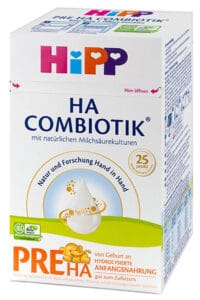
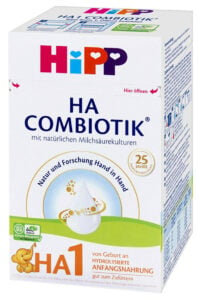
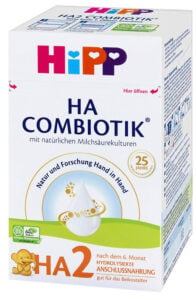
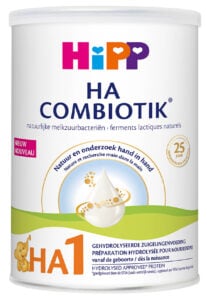
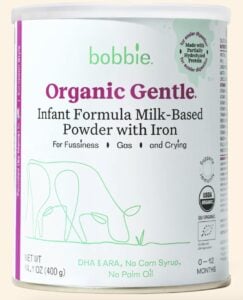
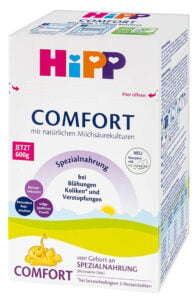
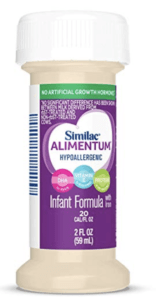
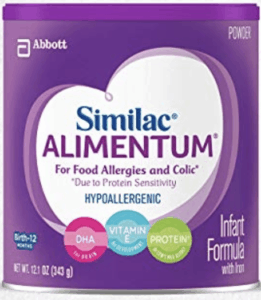


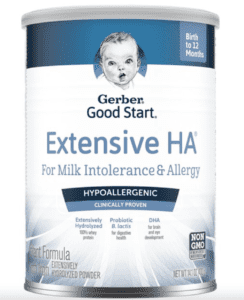

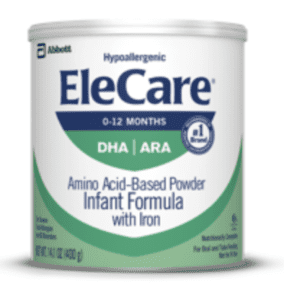
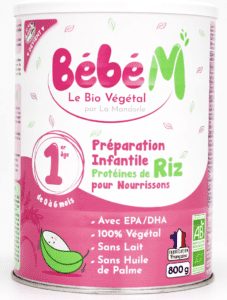
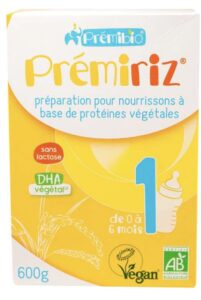
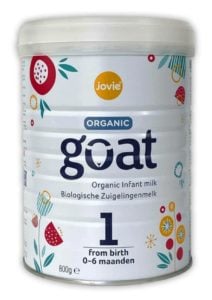
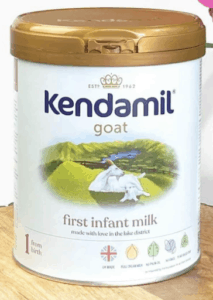
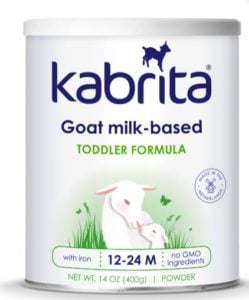
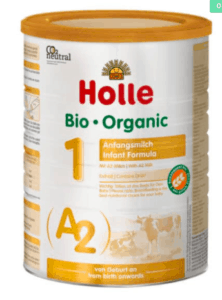
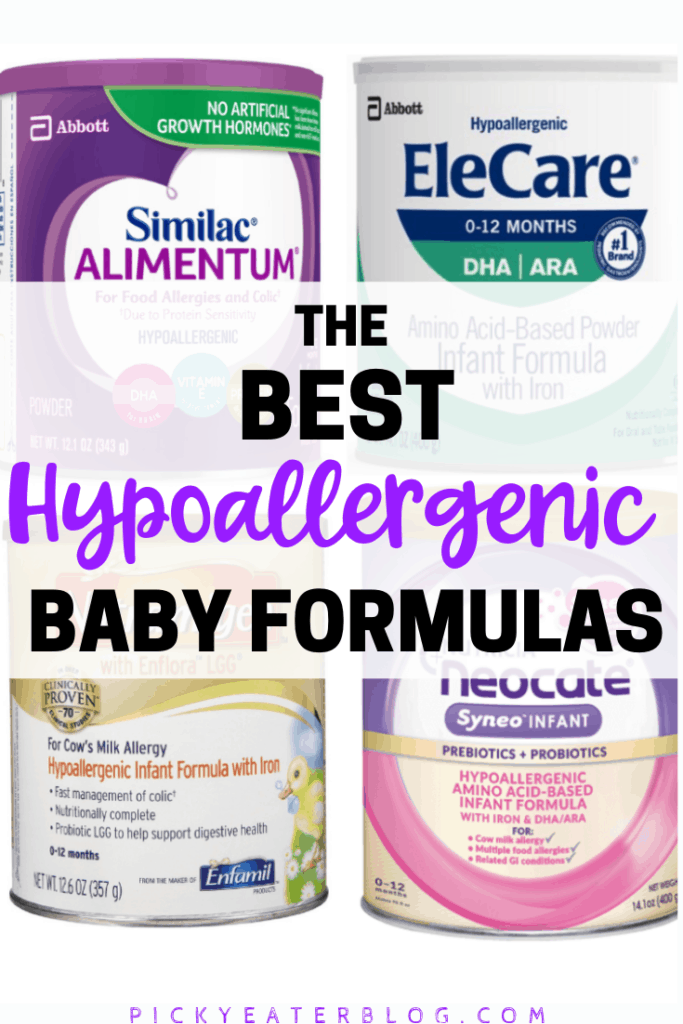

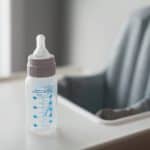
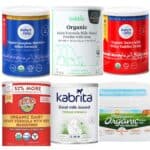








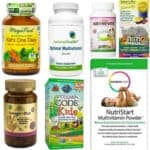
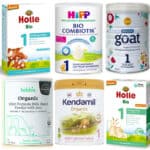



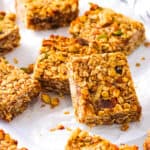




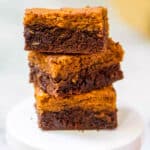



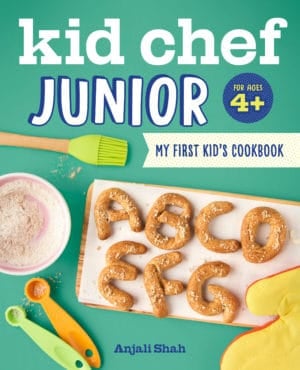



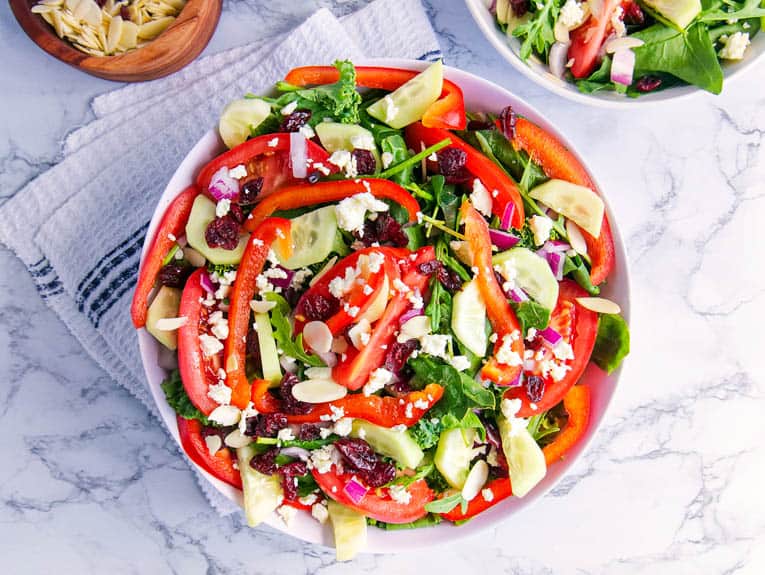


Hi Anjali,
Thank you for your informative post. I have a 5 month old, who has been fed half breastmilk and Hipp Combiotic Stage 1 formula to supplement since he was born. But around 4 mo old, he developed severe eczema and got allergy tested. Results came back negative to any food allergies including milk and soy. We first tried Nutramigen, but he still had eczema flare ups, and decided to try Alimentum. The Alimentum seems to be working (no flare ups) but he doesn’t like it and fights against drinking it even when its mixed with breastmilk. I was thinking maybe he would like the taste of Hipp Comfort better since he liked Hipp Combiotic plus it’s better ingredients. Do you think he would be able to digest Hipp Comfort even though it’s less broken down than Alimentum? Thanks for your help and input.
Hi Lois! I don’t blame your son for not liking the taste of Alimentum (it doesn’t taste that good!) Regarding whether he will be able to digest HiPP Comfort though is anyone’s guess — you honestly won’t know until you try it and see how he does. I think it is worth a try — and then at least you’ll have your answer about how broken down the milk proteins need to be in order for him to be able to digest them. If you do switch to HiPP Comfort I’d introduce it gradually (over the period of 1-2 weeks) since he has been on Alimentum for more than a month. I hope HiPP Comfort ends up working for you and for him!!
Hi Anjali-
My daughter is almost three months and has been on Hipp Comfort for almost a month. She has diagnosed silent reflux and a milk protein allergy. We do add gel mix thickener to it. We are noticing great improvements. She has been much happier and seems to be more comfortable. However, I was reading on a few of the websites where it can be purchased that it is not recommended to use this formula long term. Do you know anything about what that refers to? This is the exact wording, “It is not recommended to completely replace formula but as a solution for temporary inabilities to digest normal formula. This is not a medicine and you should consult your pediatrician if colic continues past the 6 months mark.“.
Should my daughter be getting another formula mixed with this? Or do I need to switch her to a different formula by six months? Does this formula not contain everything she needs for the first year?
Hi Ashley! My understanding is that HiPP states that on their website because most kids grow out of milk protein allergies and digestive issues due to colic and other things by the age of 6 months, but that it should be fine to keep your baby on the formula if needed. I would just double check with your pediatrician that they are comfortable with HiPP Comfort for your daughter’s entire first year of life and if they are, then go ahead and continue using it! Hope that helps!
Hi Anjali
I was wondering if you could help me out. I have a 4 month old who was diagnosed with silent reflux and possible milk allergy (dr didn’t specify and automatically told me to use nutramigen) and she has been in hiip comfort since she was 2 months old. The first two months she was on hiip combiotik and then we switched to hiip comfort. I didn’t listen to the doctor to switch to nurtamigen due to the amount of corn syrup in it.
However, she is still very congested/wheezes and the doctor says it’s from the reflux and it takes her almost an hour to finish 4 ounces. Her poop is diarrhea consistency and smells so bad and very very sour where it stinks up the entire bedroom. She fusses with the bottle and pushes it out with her tongue after drinking about 2 oz. I give her about 30 min break and then she drinks the rest because she’s practically sleeping at this point.
I just don’t know what to do- she is on reflux medication and drinking hiip comfort – so shouldn’t the wheezing/congestion go away?
At this point I’m open to trying something else- I just want her to enjoy her bottle and like to drink milk- not being force fed.
Please help! This is so stressful
Hi Nisha! I’m so sorry you’ve been struggling so much with your daughter’s feeding issues! Question for you — how was she doing when she was on regular HiPP? And were you using HiPP UK or HiPP Dutch? One thing you could do is try Nutramigen Ready To Feed which has way less corn syrup than regular Nutramigen. That way you can at least compare that to HiPP Comfort and see if it makes a difference at all – and if it does you’ll at least have an answer about what’s going on! HiPP Comfort is hydrolyzed, but it’s not as broken down as Nutramigen – and it could just be that your daughter needs a more broken down milk protein in her formula. Hope that helps! And I hope you figure this out soon – keep me posted on how it all goes!
Help!😭 I’m at my wits end! My son is almost 4 months old, I exclusively breastfed, then pumped and fed pumped milk for the first few weeks. He developed severe projectile vomiting, I cut EVERYTHING but fresh fruit and veggies from my diet. I figured he couldn’t handle my milk so I started him on hipp dutch stage 1. The spit up and vomiting continued, he was checked twice for pyloric stenosis, his doctor says it’s just severe reflux. He has had a congested nose since about 3 weeks old, he breathes heavy, and was very colicky. His ped said he is 99% sure it isn’t an allergy but to do hypoallergenic formula to help with reflux. We started on hipp comfort. His stuffy nose is still stuffy, he still breathes heavy, sometimes wheezes, developed severe eczema on his face and head and now has a severe red bumpy rash(that is confirmed not to be yeast) on his torso and groin area. His ped still swears he doesn’t have an allergy because we can’t see blood in his stool(which has been very mucousy). I attempted to switch to pea protein formula, his spit up reduced some but not a lot, and it smelled awful, is rash was much smaller when we were using that but he had multiple forceful vomits right after feeding and had retractions in his belly and horrible wheezing. Since his ped said he DOES not have an allergy I decided to try holle goat 1. We used it for 2 days 2oz of holle and 4oz comfort 5 bottles a day. He developed extremely watery poop and his eye and hand swelled up, he also developed a much worse rash on his torso and groin so I went back to comfort only. He is back to excessive spit up and vomiting (I do know the difference). So, my question is, if he can’t handle hipp comfort is it possible he can handle hipp ha pre? If it’s possible I’d like to try that before the alimentum (I HATE the ingredients, especially because they use GMOs). I hope you can help! Thanks in advance.
Hi Sharmaine! I’m so so sorry to hear about all of this! This sounds crazy stressful for both you and your son! Given everything you have already tried, and the severity of his reactions, I really doubt that HiPP HA will be any better for your son since it’s even less broken down than HiPP Comfort. While Alimentum’s ingredients aren’t as clean as HiPP HA/Comfort, it is more broken down and sometimes is the only option that will work. I’d recommend trying Alimentum Ready to Feed first – it has way better ingredients than regular Alimentum (way less sugar) – but is more broken down than HiPP Comfort/HA. Hope that helps! Let me know how it turns out!
Thank you very much! That was my next step. My oldest two boys had milk/soy protien allergies and one used alimentum where the other had to have amnio based(yuck). They outgrew it luckily. Thank you for helping me!
No problem at all!! 🙂
We are having so much trouble finding a formula for my son. He is still having a reaction on Neocate. Gets a rash and very itchy everywhere. Can he still be allergic to the broken down amino acids? He had a skin allergy test and was positive for milk but not soy. I am hesitant about givung him a soy formula because of the estrogen-like ingredient in soy.
Hi Mehreen! It is possible that your son just has a really severe milk allergy and therefore is still reacting to the broken down amino acids in neocate. I totally understand your hesitancy with giving him soy, but the best way to find out if the issue really is a milk allergy is to temporarily switch to an organic soy formula – like from Baby’s Only and see if his rash/symptoms go away. Then you’ll know for sure what the issue is and can talk with your pediatrician about whether options other than soy might work!
Hi Anj,
Thank you for posting this best formulas. However, I did not find in my location the hipp comfort or h.a. Not even on amazon in my place.
The hipp combiotic is frequently found. What is your advise with this? Maybe you did some research with Aptamil HA?
Hi Iya! Where are you located? If you are in the US or Canada I can give you recommendations on where to purchase HiPP Comfort or HA! Aptamil HA looks ok – it has a few synthetic ingredients but doesn’t have any sugars added which is a plus!
Hi Anjali,
Thank you for all your information on hypoallergenic formula!
Just had a question for you regarding my little boy, he is 5months old now and at this point only formula fed. I have him on Hipp Comfort UK at this time and he has been on it for about 2 months. He seems happy and his weight gain is going well on it. He does however spit up a lot, has loose poop (which apparently is normal on this type of formula) and recently has started to wake up more in the night with gas. I have also started to notice that his tummy gurgles when he wakes in the night and then he passes some gas. I do feed him when he wakes and he does go back down for a little while.
I had tried holle goat formula before for him but it made him super constipated to the point that he would cry when trying to pass a poop. I’m not sure if giving Hipp HA 1 Germany a try would be a good idea, if that might help with the gas/spitting up or if he isn’t tolerating the comfort then that most likely means he won’t tolerate the HA…
Our paediatrician is pushing alimentum and doesn’t suggest European formulas but I’m hesitant because I know that European formulas have better ingredients.
Any suggestions……
Hi Anna! If your baby has been on HiPP Comfort for 2 months, but has just recently started waking up at night due to gas – I’m wondering if that’s formula related or due to something else? Has anything else changed with his diet lately – e.g. have you started solids yet? Because that could be the cause for the gas. Comfort is more broken down than HiPP HA — so if HiPP Comfort is causing the gas problem it’s unlikely HiPP HA would be any different (but you could always try it and see what happens!) If nothing has changed about his diet and you haven’t started solids yet, then it’s possible HiPP Comfort is causing the increased gas problem. In that case, here are the options I can think of: 1) Try adding these gas drops and this gripe water to his diet. You’d give him a dose of each right before every single one of his feeds. See if that helps relieve the gas issue! 2) If that doesn’t work, you can try Alimentum Ready to Feed which is more broken down than HiPP Comfort, but has better ingredients than regular Alimentum. Hope that helps! Let me know if you have any questions and keep me posted on how it goes!
Thank you so much for your advice! I will try using the gas drops and gripe water and let you know how it goes!!
No problem! Good luck! Keeping my fingers crossed for you!
Hi, I’ve been struggling with my poor 4 month old daughter.. every formula I’ve tried so far causes her to have a horrible itchy rash which is very raw. So far she’s had enfamil gentlease, enfamil prosobee ( which made her have forceful vomit) and enfamil nutramigen which started out a bit better when concerning the rash but she is throwing up every day and the horrible rash she had with gentlease came back. I think it shows now because it’s been 2 weeks. I’m desperate, I don’t know what to do. My poor baby is suffering daily and I suffer seeing her like that. Do u think I should try an organic formula versus neocate? I’m scared of trying neocate because there’s been lawsuits due to rickets and other bone issues. Please help
Hi Jazmin! I’m so sorry to hear about your daughter’s digestive issues!! That must be so stressful! To your question — it’s hard to know whether it’s the enfamil itself causing the issues she’s having, or whether it’s just a really bad milk protein allergy. You could try switching her to HiPP Comfort for a week or two and see how that goes — and if her symptoms don’t subside, then your only choice will be to move to an amino acid formula. If you’re nervous about Neocate, you can always try Elecare first and see how that goes. I hope this helps! Let me know if you have any other questions!
Hello Anjali!
So my daughter is 2 months old she’s on Nutramigen because on her father’s side she has a lot of food sensitivities and when I was breastfeeding it was giving her diarrhea. She doesn’t show any of the “regular” symptoms of having an allergic reaction but she has a lot of restless nights and for about 2 weeks I kept hearing popping noises in her stomach. I haven’t heard it anymore but she recently got a cold, well I think it’s a cold but I’m worried it might be an allergic reaction to the formula. She had a lot of mucus buildup and she had a bad cough. Would you recommend me changing the formula? They won’t do any tests on her because she’s still young. I really don’t know if I should try an amino acid formula or try a European formula.
Hi! Oh man that sounds so tough! Since you haven’t been able to get her tested yet, it’s going to be tough to figure out exactly what is going on / what’s causing the congestion/etc. It could just be that she’s a typical newborn sleeper (restless nights are quite common when babies are that young!), and that she caught a cold. Or she could have an allergy – unfortunately there is just no way to tell. You could try switching to HiPP HA or HiPP Comfort just to see if it makes a difference, and if it doesn’t then you can try an amino acid formula to see if that has any effect. With a bit of trial and error hopefully you’ll be able to figure out what works best!
Hi Anjali!
Thanks again for providing all of us with such beneficial information. You’re a wonderful person. I too had a quick question about baby formula – my son is almost 4 months and due to struggling issues with breastfeeding, we’ve now been using Plum Organic Formula with him. What are your thoughts on this formula?
Hi Schweta! Plum Organic baby formula is ok, but not the best one you can get in the US (and not the best option overall). Some of the main issues with it are: no pre or probiotics added, it does contain soy oil and soy lecithin and it contains taurine. Happy Baby is a much better option available in the US. And HiPP Dutch is the best option overall. You can see more details on why in my post here: https://pickyeaterblog.com/whats-the-best-organic-formula-for-your-baby/ — hope that helps! Let me know if you have any other questions!
hi Anjali Shah, my baby is 6 months now and been drinking Nestle NAN HA 1 fm (its none from your list) since born. we did changed once to the other regular fm because thinking to buy a cheaper one unfortunately it doesn’t fit her. she got rashes all over her body and constipation after few days, we went to the doc and later did we know that she is prone to have allergy due to family history of having asthma and eczema . but im not sure she is allergy towards what. so we change back to NAN HA 1. my question is, until when do she has to drink this type of HA fm? (since it so pricey compared to the other fm) she just started eating (once a day) and lately she less passing as the doctor says normally baby at her age should poop everyday. it makes me worry should i change / downgrade to the regular type of fm? if yes what brand should i try? or i should stay until she is 1 y/o?hope you hear from you soon
Hi Najah! Your baby should be on formula or breastmilk until 1 year of age — at that time you can switch to organic whole milk. It sounds like your baby really needs a hypoallergenic formula since the regular formula clearly caused a reaction. Can you get her tested for allergies to figure out what exactly she is allergic to? Her reaction sounds like a milk protein allergy but you should get her tested to be sure. The reason for her poop changes could be because she just started solids — which can make a baby poop less depending on what solids you’re giving her. Stick to only fruit & veggie purees (no cereals/grains/dairy for now) — and give her plenty of water along with her meals. You can try a different hypoallergenic formula like HiPP HA or HiPP Comfort and see how that goes, but I wouldn’t do regular formula at all until she is 1 year old. Hope that helps, let me know if you have any other questions!
Hi,
Can you please review Kendamil Organic and include within your chart?
Hi Cass! Can you email me the ingredients list of Kendamil Organic? And also – if you know of anywhere to buy it in the US that would be helpful too! You can email me the info at pickyeats@gmail.com. Thanks!
I’m at a lost! My 8 week old has been on amino based acid formulas for the past 4 weeks. We still have mucus and traces of blood in stool. She is extremely gassy and sleeps very little due to discomfort. She is constantly grunting to expel gas. To me, theNeocate/ Elecare is not working. Of course GI doc tells me to give it another 2-3 weeks. Does it normally take this long for gut to heal? What would be another great option for her? They are saying she has a milk/soy intolerance but she hasn’t had milk/soy for at least 4 weeks. She does have acid reflux which is controlled. She still spits up a pretty good bit but it doesn’t seem to bother her. I’m at a lost for helping her!
Hi Hayley! Oh man I’m so so sorry to hear about your baby’s digestive struggles!! Poor thing! That must be so stressful for you and her! The other options like HiPP Comfort aren’t nearly as broken down as Neocate/Elecare, so I’d be surprised if that worked for your daughter over the amino acid based formulas. And if the amino acid based formula isn’t working I honestly don’t know what else I’d recommend since that is the most gentle and the most broken down of all the formulas out there. If the GI doctor recommends waiting another couple of weeks, then it is very possible that it’s just going to take her body that long to heal. Honestly, that’s what I’d do if I were you – just go with what your GI doctor says and see how things go after 2-3 weeks. If she’s still struggling after that I’d push for more follow ups and more testing to be done to get to the bottom of what’s going on. I hope you figure it out soon!! Keeping my fingers crossed for you!
Hi Anjali,
Thanks a lot for this information. It is really helpful. I have a doubt, I found in the following website https://biologisch24.com/HiPP-HA-2-Follow-on-Formula-CombiotikZ-600g (which is a German distribuitor) the following comment about HIPP HA 1 (and HA 2 of course) “For existing cow’s milk protein allergy: HiPP HA 2 COMBIOTIK® must not be used if cow’s milk protein allergy already exists or is suspected.” I AM REALLY CONFUSED WITH THIS. I was providing my son with HIPP PRE and in our opinion (my wife and I) think he was taking it very well until he had some stools with a little bit of blood (seriously, just a little bit). Our pediatrician right away says that he might be allergic to cow’s milk protein and recommended to stop using HIPP PRE and switch to Nutramigen. Our son does NOT like it, he cries every time we give it to him, and has colics. His stools has a bit of mocus and he is having few stool movements (2 per day). We really want to go back to HIPP (even when our pediatician does not know it and as soon as she saw the word WHEY in the ingredients she did not like it). My wife and I are willing to take the risk of buying either HIPP HA or Comfort. According to your article, it would be better to start with HIPP HA. Is it the one that you would recommend us?
Our son is 3.5 months old!
Hi Kevin! Thanks for reaching out! So technically HiPP HA is not as broken down as the formulas recommended for cow’s milk allergies (it’s 86-87% hydrolyzed vs. 93% hydrolyzed). That’s why some websites will put that disclaimer about not using it for a diagnosed allergy. That said, I know anecdotally plenty of moms and babies who have used either HA or Comfort for their babies with cow’s milk protein allergies and those babies have done fine on it. If your son already had blood in his stool, I’d recommend trying HiPP Comfort first, since – in addition to being 86-87% hydrolyzed like HiPP HA, it also has a reduced lactose content and modified fats (whereas HiPP HA doesn’t). You should still make sure your pediatrician is aware you are going down this route, so they can monitor your son closely in case any more severe reactions do occur. Hope that helps! And I hope Comfort works for him!!
Hello there, which one has pro/prebiotics– HiPP Comfort or HA? Would you have any advice or information about Gerber Extensive HA compared to HiPP Comfort, HiPP HA, Nutramigen and Alimentum? Thank you in advance.
Hi Farida! HiPP Comfort and HiPP HA both have pre + probiotics! Gerber Extensive HA seems more comparable to Nutramigen and Alimentum vs. HiPP Comfort/HiPP HA because the first ingredient is corn maltodextrin (basically sugar) — whereas HiPP HA use lactose as the carbohydrate, and Comfort uses Lactose + Maltodextrin (less maltodextrin than Gerber/Nutramigen/Alimentum) — which makes both better options if your baby can tolerate it!
I LOVE your articles! We tried Hipp HA and then Hipp Comfort, but baby still had blood in stool. We begrudgingly tried Nutrimigen…which tastes and smells DISGUSTING. Like cheetos and dog food mixed. Baby would NOT drink it. Someone told us about Alimentum RTF and it tastes and smells SO MUCH better. He is finally thriving! It is the only US Hypoallergenic RTF without corn solids as well. Who knew? Makes me feel a tiny bit better. You should do an updated article to let other mommas know! Thanks for your help! This was our GO TO help guide.
Thank you so much for letting me know Tatum! That is great! I have updated my post to include the info about Alimentum and Nutramigen RTF! One heads up about both — they both include carrageenan which is a thickener/stabilizer that can cause inflammation in the body. It’s basically just a tradeoff between more sugar and no carrageenan and less sugar with added carrageenan when it comes to both Alimentum and Nutramigen!
Hello Anjali Shah,
First of all I would like to thank you for such detailed information on formulas. This is the best article I have ever found . My 1year old LO doesn‘t like Amino acid based formulas which the doctor suggested. I tried Hipp HA. But he cried a lot after having Hipp HA. So I have been trying Hipp Comfort now. He develops one or two hives with Hipp comfort ( 5 spoons of this formula milk). But then it disappears after some minutes. I am confused if it is a good idea to continue giving him this. Has anyone experienced such thing? Or would you suggest me something on this?
Hi Seema! 1-2 hives that disappear after just a couple of minutes sounds like a very mild allergic reaction to me. I haven’t heard of that happening before with Comfort, but if he has no real discomfort and the hives go away, it might just be his body adjusting to the formula (and you might see no hives over time). I would just ask your pediatrician what they think about the hives and if they think the hives aren’t an issue, then you should be fine continuing to use HiPP Comfort! Hope that helps! Let me know if you have any other questions!
Hello, I’m currently on an elimination diet for dairy, soy, gluten, nuts & shellfish to see which is giving my 2.5 mo son allergy symptoms + reflux and inability to sleep on his back during the night without shrieking in pain :(. He tested negative 2x with our Ped for dairy/soy intolerance but we were told sometimes it doesn’t showcase until 3mo+. We were referred to GI. I’m just about to hit 2weeks of dairy/soy free diet but without seeing much improvement with his gas/stomach issues I was told to cut out all potential allergens this week so it’s still too early to tell if Milk is the main instigator. That said, we tried HIPP HA for first time tonight (after our specialist recommended it amongst other US versions. We decided to go with HIPP after hearing it worked amongst friends.) However, hours following the HIPP HA stage 1, my son developed a hot rash/hives on his cheek. It sounds like HIPP Comfort might be our next step??? Or HOLLE goat??? We went through Huggable so hoping to be able to find another solve. Given, do we need to transition him slowly to a new formula if he only drank 1 oz? We’re still bottletraining so this is his first experience with formula. Any suggestions would be greatly appreciated.
Hi Jackie! I’m so sorry to hear about your son’s allergies/discomfort with formula! That must be so hard! If your son reacted negatively to HiPP HA, I’d recommend HiPP Comfort which you can get from Bottles and Burps – they’re a reputable seller of comfort since Huggable doesn’t carry it yet. I wouldn’t recommend Holle Goat since it has been known to constipate some babies and with a baby already in so much discomfort I’d shy away from that as an option. And yes I would recommend transitioning him slowly to Comfort – about 1oz per day (increasing by 1oz each day) in each bottle as you move from breastmilk/HiPP HA to Comfort. Hope that helps, and I hope this works for you and him!!